




Quick Links:
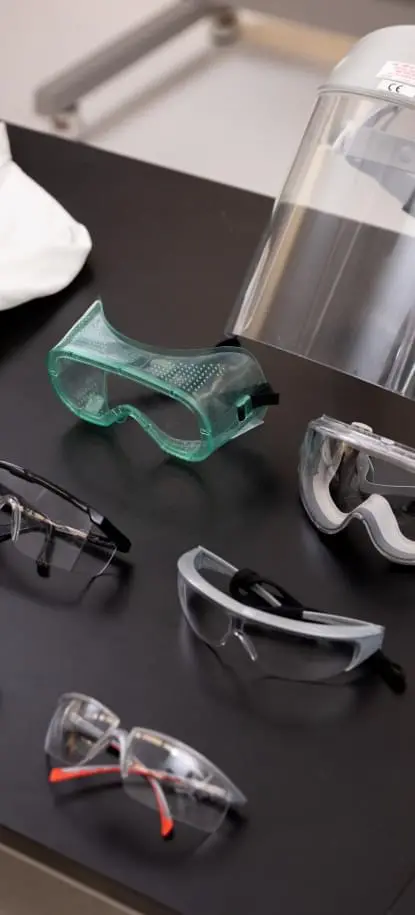

Proper Personal Protective Equipment must be worn at all times when working in the laboratory:
Please Note: Principal Investigators, laboratory managers, and centers are free to set policies that establish minimum PPE requirements for personnel working in and entering their laboratories above the KAUST minimum standards.
Further details on PPE can be found under Industrial Hygiene.
Laboratory personnel should conduct risk assessment (link to risk assessment section) of specific operations/experiments occurring in their laboratories. This enables them to determine whether engineering and administrative controls are sufficient or if PPE is necessary to safely carry out the operations.
Laboratory personnel must be trained in the selection, proper use, limitations, care, and maintenance of PPE. Training requirements can be met in a variety of ways including videos, group training sessions, and handouts. Periodic retraining should be offered to both the employees and supervisors as appropriate. Examples of topics to be covered during the training include:
Eye protection is one of the most important and easiest forms of PPE to wear. Laboratory personnel must use eye protection for many of the chemical and physical hazards found in laboratories including flying particles, broken glass, molten metal, acids or caustic liquids, chemical liquids, chemical gases or vapors, or potentially injurious light radiation.
Eye protection is one of the most important and easiest forms of PPE to wear. Laboratory personnel must use eye protection for many of the chemical and physical hazards found in laboratories including flying particles, broken glass, molten metal, acids or caustic liquids, chemical liquids, chemical gases or vapors, or potentially injurious light radiation.
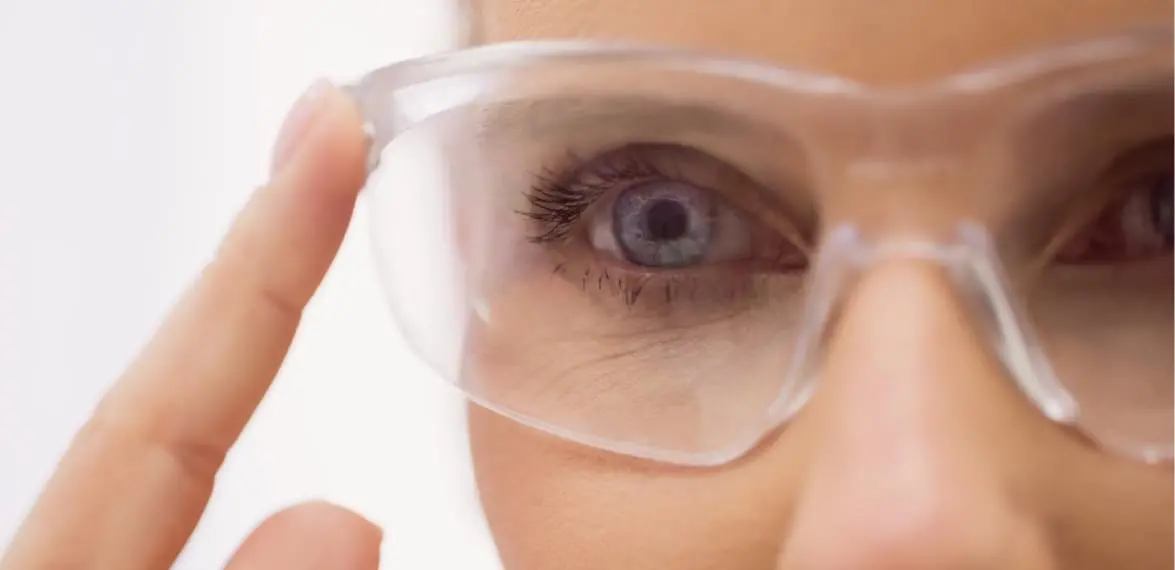
Appropriate eye protection is required whenever working in or entering a laboratory in which hazardous chemical or infectious materials, or other mechanical or physical eye hazards are present. Eye and face protection must be selected on the basis of hazard and assessment of risk.
All laboratory employees and visitors are required to wear protective eyewear while in laboratories where chemicals are being handled or stored, at all times, even when not working directly with chemicals.
Ordinary prescription glasses do not provide adequate protection from injury to the eyes. Adequate eye protection requires the use of hardened- glass or plastic safety spectacles with side shields. When selecting proper eye protection, be aware there are a number of different styles of eyewear that serve different functions.

Gloves must be worn whenever significant potential hazards from chemicals, cuts, lacerations, abrasions, punctures, burns, biologicals, or harmful temperature extremes are present. The proper use of hand protection can help protect from potential chemical and physical hazards. Gloves must be worn when using chemicals that are corrosive or easily absorbed through the skin.

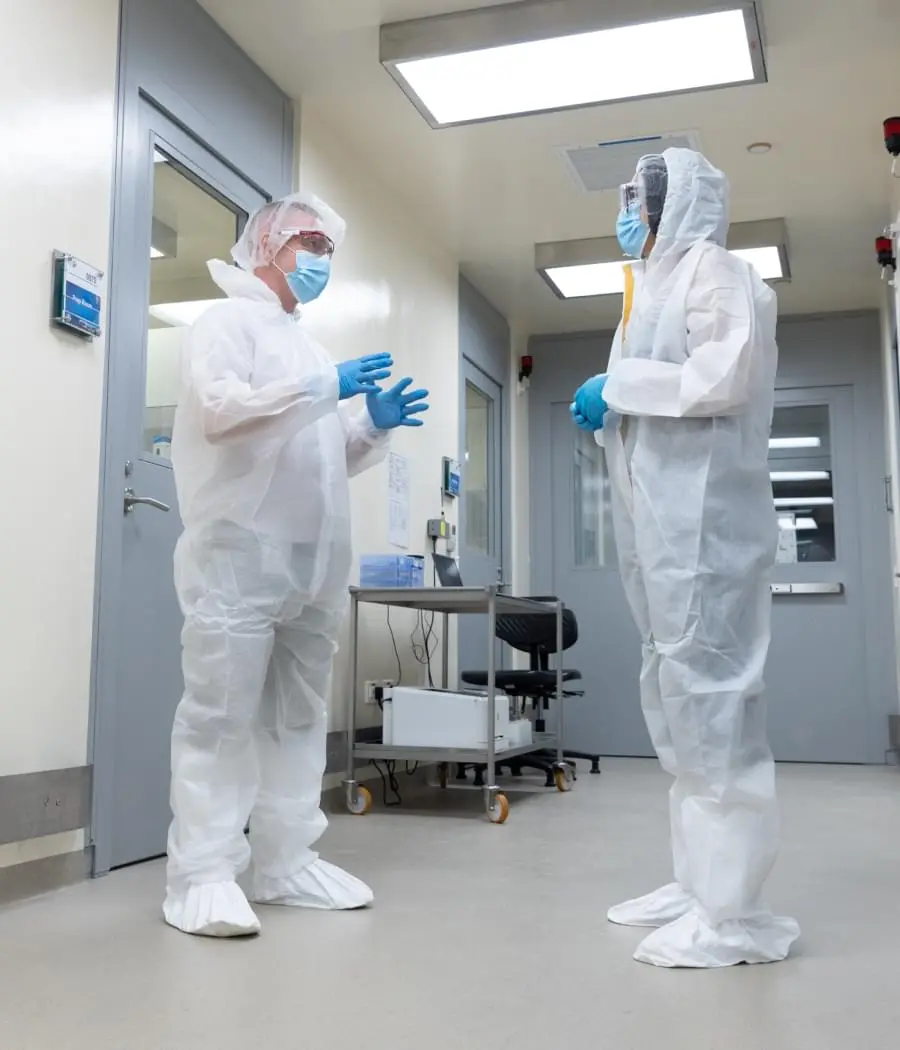
Protective clothing includes laboratory coats or other protective garments such as disposable coveralls, chemical splash aprons, and other items that can be used to protect street clothing from biological or chemical contamination and splashes, as well as providing additional body protection from some physical hazards.
Laboratory coats must always be worn during active work in the laboratory that involves hazardous materials. A lab coat helps prevent contact with minor chemical splashes or spills encountered in laboratory- scale work. Laboratory coats do not significantly resist penetration by many liquid chemicals. Remove your lab coat immediately upon significant contamination. Do not take lab coats home and launder them because of the potential for contamination of the home environment.
KAUST offers a laundry service for lab coats – see the Lab Services Bulletin on the Lab Safety webpage for more information.
Lab coats should remain buttoned to protect more completely. Laboratory coats are loose-fitting by design, so that in case of chemical contact there is ample time to react before it contacts the skin. Lab coats provide minimum protection. In some cases, disposable outer garments (e.g.
Tyvek) may be necessary. Many disposable garments, however, offer only limited protection from vapor penetration and you need to exercise considerable judgment when using them. Impervious suits fully enclosing the body may be necessary in emergencies.
Please note: shorts (short skirts and similar clothing, etc.) and open toed shoes (sandals, flip flops, etc.) are not permitted in KAUST laboratories. See the PPE Standard for KAUST Laboratories for more information.
Eye protection is one of the most important and easiest forms of PPE to wear. Laboratory personnel must use eye protection for many of the chemical and physical hazards found in laboratories including flying particles, broken glass, molten metal, acids or caustic liquids, chemical liquids, chemical gases or vapors, or potentially injurious light radiation.
Respiratory protection includes disposable respirators (such as N95 filtering facemasks commonly referred to as “dust masks”), air purifying, and atmosphere supplying respirators. Respirators are generally not recommended for laboratory workers. Engineering controls, such as dilution ventilation, fume hoods, and other devices, which capture and remove vapors, fumes, and gases from the breathing zone of the user are preferred over the use of respirators in most laboratory environments.
There are certain exceptions to this general rule, such as the changing out of cylinders of toxic gases and emergency response to chemical spills.
The use of disposable respirators (e.g., N95 filtering facepieces/dust masks) for weighing powdery or dusty materials is acceptable. However, please note that most disposable respirators do not offer protection against chemical vapors and fumes; they are for use of nuisance dust only. As a measure of coworker protection, when weighing out dusty materials or powders, consider waiting until other coworkers have left the room to prevent possible exposure and thoroughly clean up and decontaminate working surfaces.
A laboratory worker at KAUST may not purchase a respirator and bring it to their lab for personal use without prior consultation with HSE.
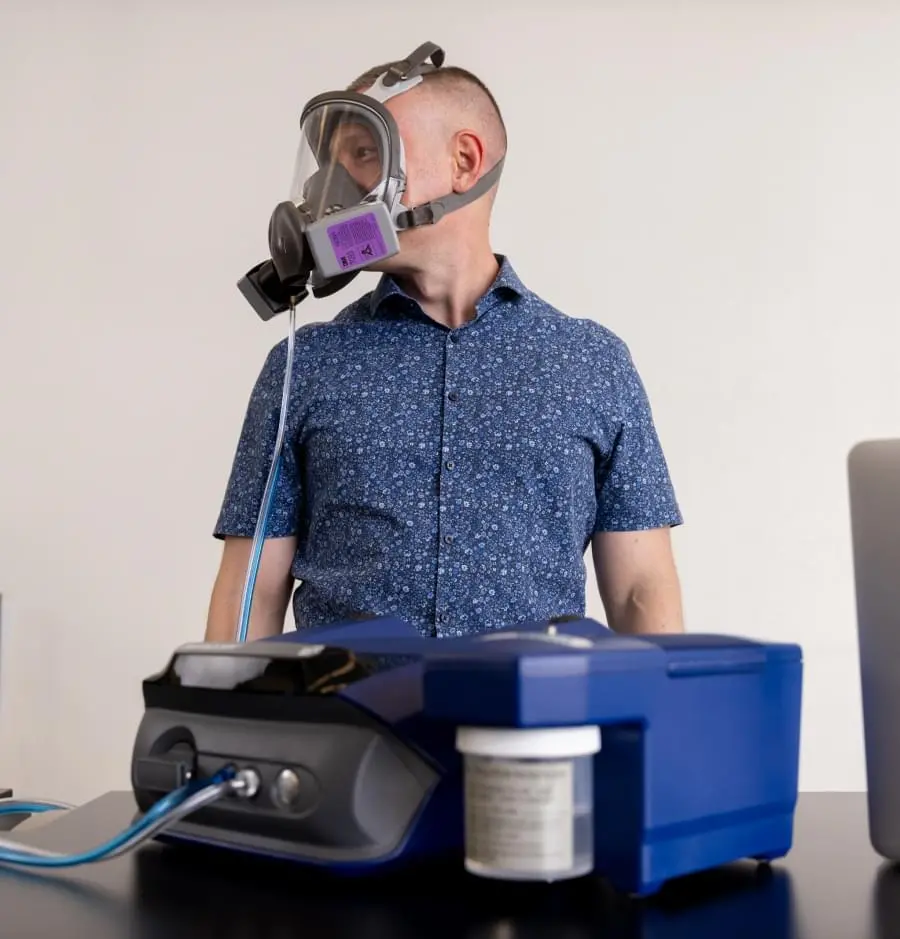
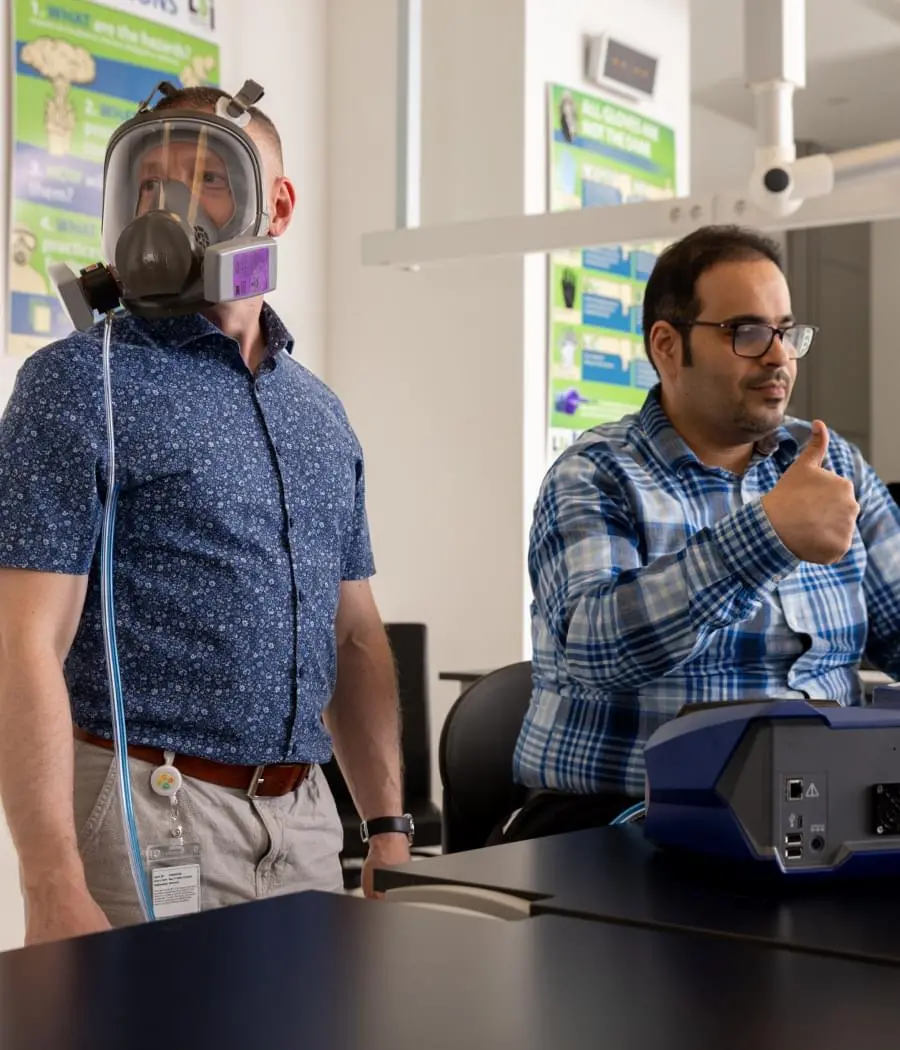
KAUST employees who must wear respirators will be included in KAUSTʼs Respiratory Protection program, which includes the following:
NOTE: AS WITH CHEMICAL PROTECTIVE GLOVES, THERE IS NO ONE UNIVERSAL RESPIRATOR CARTRIDGE THAT CAN BE USED WITH EVERY CHEMICAL. For more information about the use of respirators at KAUST, please contact HSE at hse@kaust.edu.sa.
Hearing protective devices includes earplugs, earmuffs, or similar devices designed to protect your hearing. If occupational noise exposures exceed permissible levels and cannot be reduced through engineering or other controls, then hearing protective devices must be worn. If you have questions about whether you are receiving an occupational noise exposure, or would like to request workplace monitoring or additional information, then please contact HSE at hse@kaust.edu.sa.

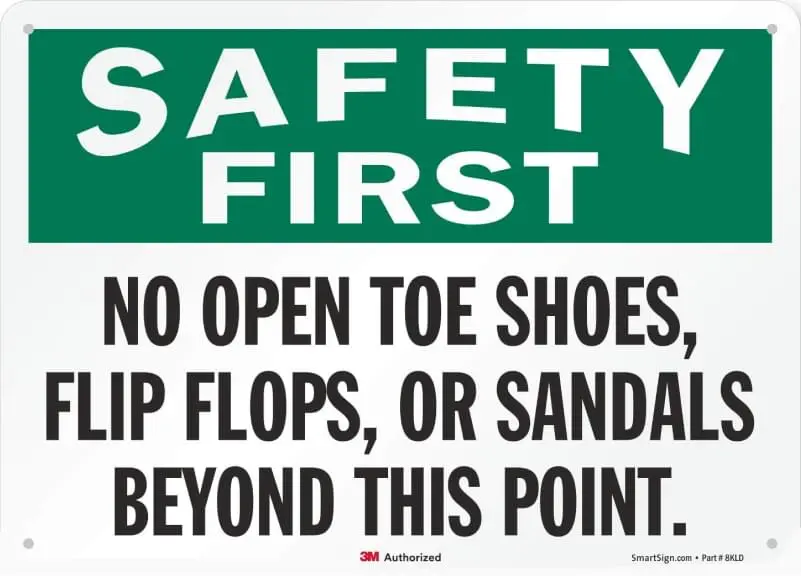
Laboratory personnel (and other personnel) must wear appropriate footwear at all times in laboratories, laboratory support areas, and other areas with chemical, biological and physical hazards are present. Laboratory personnel must not wear sandals or similar types of perforated or open toe shoes whenever working with or around hazardous chemicals or physical hazards. This is due to the potential exposure to toxic chemicals and the potential associated with physical hazards such as dropping pieces of equipment or broken glass being present. In general, shoes should be comfortable, and leather shoes are preferable to cloth shoes due to the better chemical resistance of leather compared to cloth. Leather shoes also tend to absorb fewer chemicals than cloth shoes. However, leather shoes are not designed for long term exposure to direct contact with chemicals. In such instances, chemically resistant rubber boots are necessary.
NOTE: LABORATORY PERSONNEL MUST NOT WEAR SANDALS OR SIMILAR TYPES OF PERFORATED OR OPEN-TOE SHOES WHEN WORKING IN THE LABORATORY.